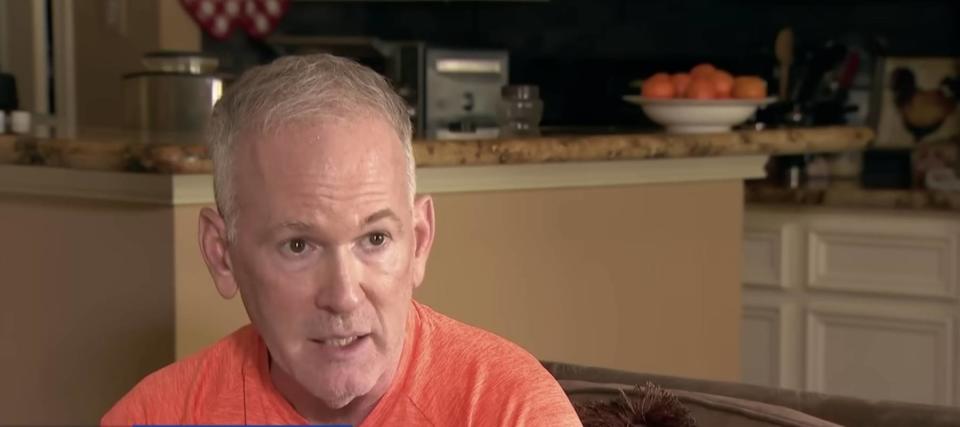Houston man charged for electricity usage during a power outage — here’s how to avoid common utility bill traps

After a series of storms and tornadoes hit Houston in late May, more than 900,000 people lost power for several days.
Yet, one resident, Craig Wolcott, received messages from Smart Meter Texas stating that he’d used 22.23 kilowatts of electricity on the Friday he lost power, and another 17 kilowatts on the Saturday when he was still without power.
“The meters were dead,” he told KPRC 2 Click2Houston. “Nothing had power here.”
Don't miss
Commercial real estate has beaten the stock market for 25 years — but only the super rich could buy in. Here's how even ordinary investors can become the landlord of Walmart, Whole Foods or Kroger
Cost-of-living in America is still out of control — use these 3 'real assets' to protect your wealth today, no matter what the US Fed does or says
These 5 magic money moves will boost you up America's net worth ladder in 2024 — and you can complete each step within minutes. Here's how
As of March 2024, the cost of electricity increased by 3.6% in the last 12 months, according to data from the Bureau of Labor Statistics (BLS).
In addition, Americans spend a monthly average of $117 on power — not to mention $45 on water and roughly $62 for natural gas.
Here’s what went wrong in Wolcott’s case — and tips on how you can avoid skyrocketing utility bills in the future.
What exactly happened?
During their investigation, KPRC discovered that the usage rates recorded by CenterPoint Texas, which owns the Houston lines and meters, can take a few days to recalibrate with real-time measurements. This likely explains why Wolcott saw inaccurate power usage readings during a city-wide power outage.
However, if Wolcott hadn’t signed up to receive notifications from Smart Meter Texas, the company that runs his power meter, there’s a good chance he never would have realized that he was being charged in the first place.
The reporter who investigated this story, Amy Davis, said she initially hadn’t signed up for digital notifications herself. But after speaking with Wolcott, she turned hers on and was surprised by what she discovered.
“I was shocked on Saturday — when nobody was home — how much electricity I’m using just to keep my house at 78 degrees,” she said during her broadcast report.
When Wolcott first noticed the usage disparity, he called his electric provider, Gexa Energy.
“[They] said, ‘We have nothing to do with that. We just bill for basically what we’re told you use,’” he told KPRC 2. The news outlet reported that CenterPoint is the one who informs Gexa about what to charge its customers.
Alyssia Oshodi, a corporate representative from CenterPoint, appeared on KRPC’s broadcast to tell viewers not to worry if they see usage disparities for a few days. The system uses automatic reporting, and sometimes it just needs a few days to calibrate the actual usage.
“The system will go back and basically interrogate the data and be able to get the correct — in this case — no usage that actually occurred,” she explained.
She added that customers should call their utility company if the numbers are still off after a week has passed.
Read more: Rich young Americans have lost confidence in the stock market — and are betting on these assets instead. Get in now for strong long-term tailwinds
How to avoid paying more on your utility bills
Keeping an eye on how you use utilities can not only make you aware of possible mishaps like in Wolcott’s case, but it can also inspire you to limit usage and lower your bills.
For example, finding other ways to keep your house cool during the summer months — that don’t require turning on your air conditioner — can help save you money.
Ovens can heat a home quickly. As a solution, consider cooking with appliances such as slow cookers, microwaves and toaster ovens for energy-saving options. Where possible, doing the majority of your meal prep in the evenings, when the cooler temperatures hit, will also help.
A ceiling fan can also make a room feel cooler and only uses roughly 10% of the energy of an air conditioner.
In addition, CNN reported that drinking water — even if it’s lukewarm — is an easy and cost-effective way to stay cool without resorting to switching on the air conditioner.
For laundry, use cold water and wash full loads instead of multiple smaller ones to save on energy.
New windows and doors will also go a long way toward helping you keep costs down. Having properly sealed doors and windows reduces energy loss. In fact, heat gain or heat loss can account for 25%-30% of your home’s heating and cooling costs.
Although replacing these items can be a costly venture, it might be worth the price tag in the long run. If not, consider checking for broken seals around doors or windows that can be easily fixed after a quick trip to the hardware store.
What to read next
Car insurance premiums in America are through the roof — and only getting worse. But 5 minutes could have you paying as little as $29/month
‘Baby boomers bust': Robert Kiyosaki warns that older Americans will get crushed in the 'biggest bubble in history' — 3 shockproof assets for instant insurance now
The 5 most expensive mistakes in options trading and how to avoid them
This article provides information only and should not be construed as advice. It is provided without warranty of any kind.

 Yahoo Finance
Yahoo Finance 